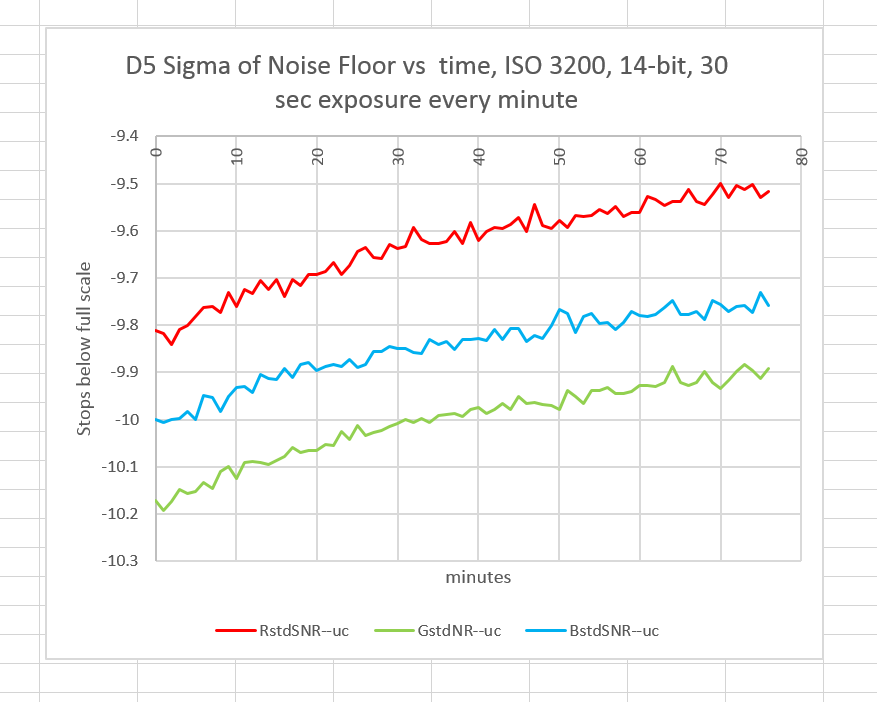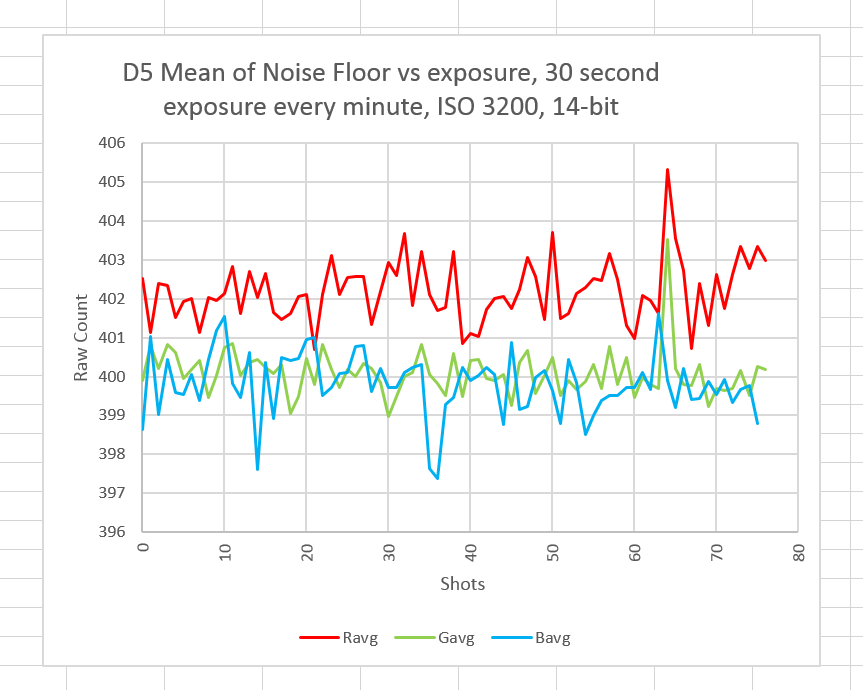This is part of a series of posts about the Nikon D5. The series starts here.
I have read posts that say that the D5 has a self-heating problem, so I was curious to see what would happen when I subjected it to my usually self-heating test, which has proven to be stressful to Sony a7x cameras.
I set a D5 to single shot mode, with ISO at 3200 and the shutter speed set to 30 seconds, with LENR off. I installed the body cap. I used an intervalometer to trigger the shutter, and set the interval to one minute, and let the thing run for more than an hour., then looked at the standard deviation of the noise in a central 200×200 pixel square.
This looks exceptionally good to me. If the D5 has a self-heating problem, it must take a different protocol to excite it.
While I was at it, I looked at the mean dark-field readings:
There appears to be a small red bias, but no drift with temperature (and the camera was warm at the end of the test).
I will be looking for local heating effects that wouldn’t show up with the relatively small central sample that I’m using here.


Leave a Reply